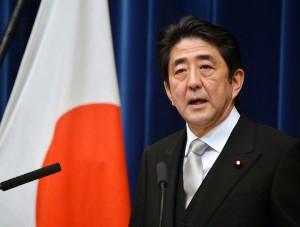 Saying that there is “rising uncertainty” with regards to the country’s debt situation, Moody’s has cut Japan’s credit rating. Yet another indicator of fundamental problems in one of the world’s most powerful economies, Japan’s problems go well beyond its dramatically changing TECH industry.
Saying that there is “rising uncertainty” with regards to the country’s debt situation, Moody’s has cut Japan’s credit rating. Yet another indicator of fundamental problems in one of the world’s most powerful economies, Japan’s problems go well beyond its dramatically changing TECH industry.
See more on this surprising downgrade and what it means…
Ever since Shinzo Abe was elected Prime Minister of Japan, the famous (some would say infamous) politician sought to take an aggressive posture to get the country’s then-stagnant economy back on a growth track. Taking sometimes controversial actions to stimulate the economy, for a time, the initial results of Abe’s policies looked promising.
To be sure, Japan’s problems were daunting. After year’s of stagnation, Abe – whose policies came to be called Abenomics – launched an ambitious stimulus program…including, amongst other things, a significant devaluation of the yen.
Pulled back into the muck of recession…

Japan’s Prime Minister
But now, new numbers on the country’s GDP show that in the third quarter of this year the country fell back into a recession. Abe’s efforts to aggressively kick-start the economy appeared to have quickly run out of steam.
Japan is struggling with a two-headed monster – stagnation and deficits. Abe, and many on his team, attempted to give the economy a kick in the butt through a dramatic increase in stimulus in order to generate revenue growth – and hopefully – to pay down the choking systemic debt levels.
Negative growth…
But with the onset of what is euphemistically called “negative growth” – the country has slipped back into recession…and still has that nagging debt problem. And this reality has motivated Moody’s to cut the credit rating of Japan – the third largest economy in the world. Moody’s cut Japan’s rating one-step…from Aa3 to A1.
Many blame the negative turn of developments on poor execution by the government. The government’s stimulus package appeared, initially, to be working. After years of deflation, growth seemed to have returned and early numbers on economic growth were encouraging.
Horse-choking deficit…
Then, in April, the government – anxious to work down its horse-choking deficit level (which is more than twice the size of the overall economy, according to a story by the Japan Times) – mandated a sales tax increase from the existing 5%…to a much higher 8%.
This was the first tax increase in 17-years, and the government said it planned another increase in 2015. But in the wake of a strong negative reaction to the first increase by the Japanese public…and the fact that economic growth was brought to an abrupt halt…Tokyo has said it will delay the increase scheduled for 2015.
Offering citizens a referendum…
The Prime Minister has also called a special election that Abe himself has described as a referendum on his administration’s economic strategy.
“The first driver for the downgrade of the Japan government’s debt rating to A1 is the rising uncertainty over whether the government’s medium-term deficit reduction goal is achievable, and whether policy makers can overcome the tensions inherent in promoting growth while simultaneously stabilizing and reversing the rising debt trajectory,” Moody’s said in a prepared statement announcing their decision.
Chided by an American credit agency…
Moody’s went on to chide the country for delaying the 2015 tax increase, saying such a delay “poses risks to fiscal consolidation and, over the longer-term, to debt affordability and sustainability.”
It’s kind of like a bear trap that Japan finds itself caught in – government spending to stimulate the economy adds to the deficit…but in theory, a growing economy should generate future tax revenues that can then be used to pay down the debt load. But it’s a delicate balance.
“Japan’s deficits and debt remain very high, and fiscal consolidation will become increasingly difficult to achieve as time passes given rising government spending, particularly for social programs associated with a rapidly aging population,” Moody’s rather unhelpfully pointed out.





Leave a Reply